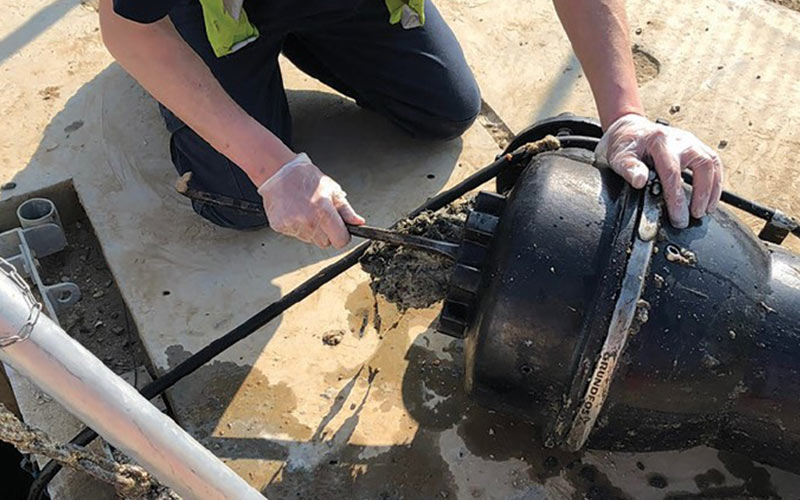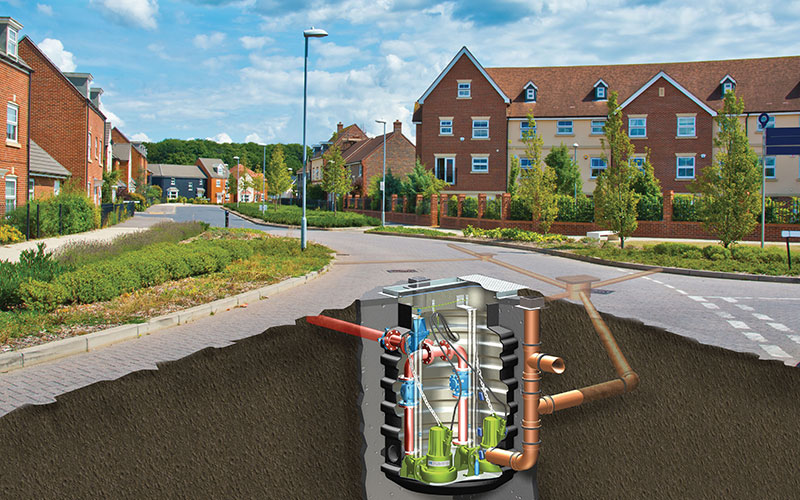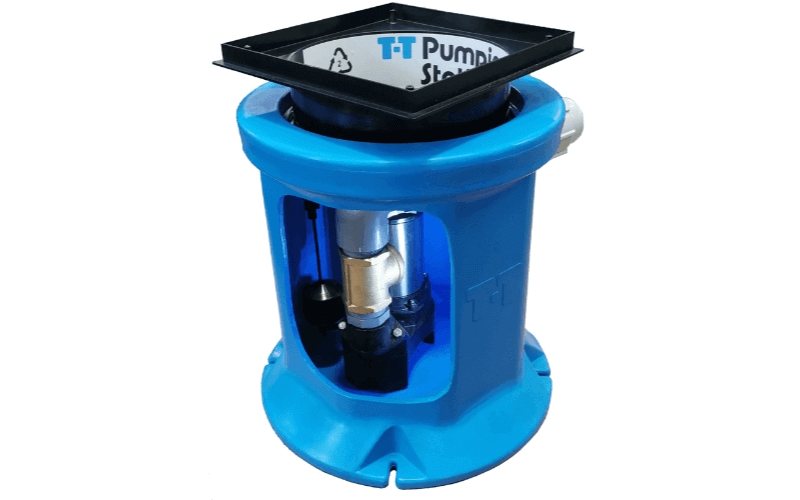Pump Station Know-How: What is a Pumping Station?

A pumping station works by collecting and then pumping waste to the sewer system at high pressure, after which natural gravity takes over.
Firstly, the liquid waste is transferred into and stored in a wet well or collection chamber monitored by level control equipment such as a float switch or liquid level sensor. When the sewage reaches a predetermined level, an integral pump is activated to lift the liquid at pressure through a discharge pipe system and into a gravity sewer manhole.
Typically, a float switch is used to monitor the liquid level and control the operation of the pump. As the name suggests, the switch floats on top of the liquid and uses an internal microswitch to turn the effluent pumping station on and off when the liquid reaches the switching point. Find out more information about float switches and how they work.
Do all Pumping Stations work in the same way?
There are several different types of pumping stations, but most work in the same way. The main types are:
Below Ground Pumping Stations
Below ground pumping stations are a discrete solution ideal for controlling wastewater, drainage water and sewage. They are a popular waste management solution choice in housing estates, schools, hospitals, nursing homes, hotels and many other locations.
Above ground Pumping Stations
Above ground pumping stations are designed for locations where a below-ground pumping station is not a viable option, this may be due to restricted below-ground space or restrictions on construction in historical/protected locations. They are suitable for a wide range of surface water, sewage and drainage applications.
Utility Pumping Stations
Utility pumping stations are compact units designed for in-house locations for pumping low-volumes of effluents and domestic wastewater from showers, washing machines, dishwashers and other utilities.
Adoptable vs Private Pumping Stations
Lift stations can be divided into two main categories, adoptable and private.
Adoptable pumping stations are typically used for large-scale applications on public land. Once built and commissioned the relevant local water authority 'adopts' the station from the contractor and becomes responsible for its operation and long-term maintenance. Adoptable stations must be designed and constructed in compliance with the requirements of the appropriate water authority as well as the DCG (Design and Construction Guidance) in order to achieve adoption, so they do not come as preformed packages. Find more detailed information about adoptable stations in our guide What is an Adoptable Pumping Station.
Private pumping stations are available as preformed packages, complete with internal pipework, valves, level control and control panel for rapid and easy installation once on site. These are the lift stations of choice for privately owned sites where the stringent requirements of an adoptable station do not need to be met.
For more detailed information, or individual advice on the best pumping station option for your site, please contact our friendly in-house experts by calling +44 (0)1630 647200, emailing pumpingstations@ttpumps.com or completing our online enquiry form.




